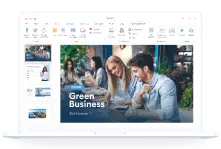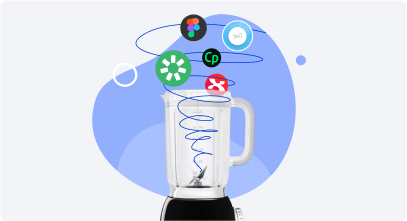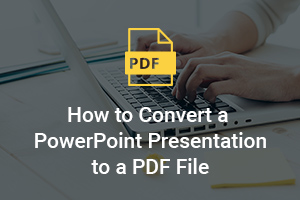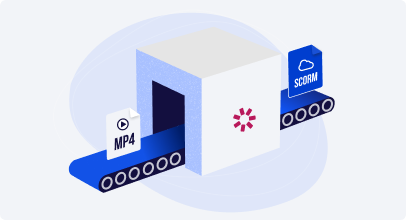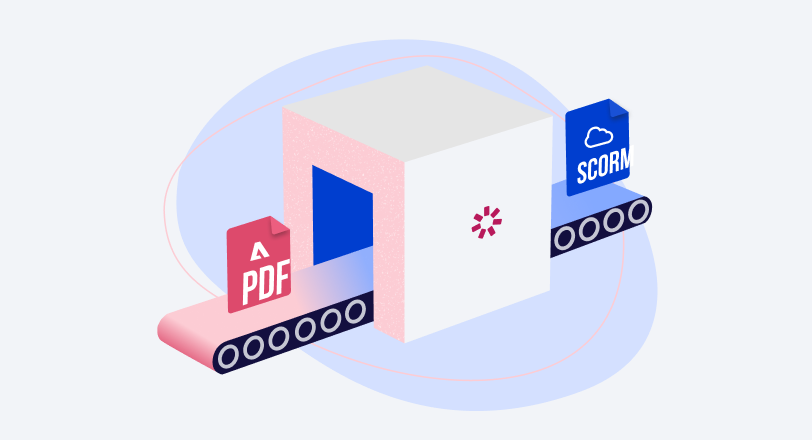eLearning Standards Comparison: AICC vs SCORM vs xAPI vs cmi5 vs IMS Common Cartridge

eLearning standards… These two simple words can inspire dread in even the most experienced L&D professionals and instructional designers. In an ideal world, we would develop amazing eLearning courses in the authoring tool of our choice, export them, and they would ‘just work’. We are definitely getting closer to that ideal world, but unfortunately we aren’t quite there yet!
There are a number of eLearning standards that are supported by various authoring platforms and learning management systems, and they all have pros and cons. Oftentimes you’ll need to make a call on which standard best supports the goals of you and your client, taking into account such things as the delivery format, whether tracking is required and to what degree, how the course will be consumed, etc. So it’s important to understand the peculiarities of each eLearning standard, and which one to choose for specific tasks.
We’ve conducted a thorough analysis of all existing standards for online learning, and we’re sure it’ll help you understand the differences between them and make an informed choice for your next project.
Jump to the Comparison Chart of eLearning standards below if you want to learn about their key differences briefly. Now let’s take a closer look at each of the standards.
AICC
AICC is a very early eLearning standard. It was created in 1988 by the Aviation Industry Computer-Based Training Committee (AICC) to standardize the materials and technology used to train airline workers.
The AICC standard uses the HTTP AICC Communication Protocol (HACP) to communicate between a learning management system (LMS)and the course content. The HACP methodology is quite straightforward, using an HTML form and simple text strings to transmit information to and from the LMS.

How AICC works
AICC today
The original AICC standard is still used by many organizations for legacy reasons, so it’s unlikely the standard will completely disappear anytime soon, but for all intents and purposes, it’s a dead standard.
Reasons to consider
Given that AICC is extremely old by technology standards, is there anything it can still do better than the newer standards that have followed? Actually, there are a couple of areas where AICC still has an advantage:
- Security: AICC is more secure. It supports highly secure HTTPS data transfers between the content and the LMS.
- Deployment flexibility: AICC content can be stored on a separate server or domain from the one where the LMS is hosted, which allows for more flexible deployment configurations.
Downsides
There are several weaknesses to AICC as a technical standard, as you would expect from a standard of this age:
- No course tracking: AICC can’t track course progress in any meaningful way; it has the most limited tracking and reporting capabilities of the current major standards.
- Limited compliance: There’s a wide spectrum of what is considered AICC compliant, and while it’s relatively easy to find a system that’s technically compliant, it may lack important features that will require manual coding to add.
- No more updates: The AICC group disbanded in 2014, so the AICC standard won’t receive any more updates.
- Lessening support from eLearning developers: Most course authoring tools and learning management systems still support AICC at a basic level, but course developers and instructional designers are increasingly choosing more modern e-learning standards.
Final verdict
Although AICC remains interesting as a way to gauge how far eLearning standards have come, it’s not worthy of consideration as it’s an outdated standard and there are newer, better options available.
SCORM (1.2 & 2004)
Sharable Content Object Reference Model (SCORM), was first published by the US government’s Advanced Distributed Learning (ADL) project in 2000, and is the de-facto standard for eLearning content. The standard, is, in fact, a set of technical standards that were designed to address the issues of its predecessor, AICC.
SCORM provides the communication method and data models that allow eLearning content and an LMS to work together. All the training materials for one course are packed into a SCORM package, a .zip archive that contains files in a specific hierarchy. To deliver your e-courses via an LMS, SCORM has its three main components that work together :
- Content packaging: This outputs the course in a ZIP file.
- Run-time: This launches the course in a web browser.
- Sequencing: This dictates how your learners navigate through the course.

How SCORM works
SCORM 1.2 became the default technical standard to deliver eLearning via an LMS, and has massive support both from authoring tools and learning management systems. SCORM 1.2 was superseded by SCORM 2004.
SCORM 1.2 vs. 2004
There are not that many differences between SCORM versions; they are summarized below:
- Status separation: SCORM 1.2 only supports a lesson status of passed, failed, completed, incomplete, browsed, or not attempted. SCORM 2004 divides the lesson_status into ‘completion_status’ (completed/incomplete) and ‘success_status’ (passed/failed).
- Read/Write interactions: SCORM 1.2 allows you to write only the ‘interaction data’. SCORM 2004 specifies interactions to be read/write, so lessons can now query the status of a past interaction, get the result, and act accordingly (for example ‘user answered a question at the beginning, so they don’t get another chance to answer it).
- Sequencing: SCORM 2004 helps the author get on top of the content using the ‘sequencing’ part of the specification. It offers a number of rules that define the order in which learners access the content. They are restricted to predefined paths, and you can allow them to save their results and resume later.
For a more detailed overview of the differences between the two versions, take a look at this SCORM 1.2 vs SCORM 2004 comparison.
SCORM today
Both SCORM 1.2 and 2004 continue to be the default standards used by many in the eLearning industry, and have widespread support within modern software tools. SCORM remains popular for corporate training.
Reasons to consider
As SCORM is still the current default industry standard, there’s a range of benefits. If you want to create a simple working eLearning course or have a wealth of pre-made content to choose from, it’s hard to beat SCORM as a technical standard. Here are some of its strengths:
- Easy content creation: Most SCORM content authoring tools are quite straightforward and user friendly. You don’t have to be a coding genius to transform a Powerpoint deck, for example, into an interactive eLearning course.
- Sequencing support: You can set rules for how long a learner has to stay on a certain page or section before they are allowed to progress, and how much time they need to spend on a course overall.
- Authoring tool support: Almost all authoring tools support both versions of SCORM.
- LMS support: Almost all LMS vendors support SCORM content, so migrating courses from an old system to a new one is relatively easy.
- Easy course catalog building: SCORM specifies a minimum set of metadata that makes it practical for you to build catalogs of content, regardless of where the content comes from, negating the need to be tied to a single authoring tool or content provider.
- Mix and match content: You can mix and match content from different sources within a course; for example, eLearning developed in one authoring tool can be mixed with other SCORM packages developed in other tools.
- Standardized archiving: Obsolete content can be archived in standard, well-documented ZIP format.
Downsides
The newest version of SCORM (SCORM 2004, 4th edition) was released in March 2009, so it’s been almost a decade since SCORM was last updated, and this is apparent in a number of key areas:
- No offline learning support: SCORM courses do not work without an internet connection and a web browser, so your learners can’t take a course offline and may experience interruptions and dropouts if their connection is not strong.
- LMS-only deployment: SCORM tracking is only possible via an LMS, so if you’re planning to deploy directly via a website or mobile app, SCORM won’t be able to help you.
- Non-native HTML5 support: SCORM content was originally Flash-based. With Flash being deprecated, everything is now moving towards HTML5. While most modern authoring tools can output SCORM content in HTML5, the quality can be inferior versus native HTML5 versions, especially if you have a lot of rich media like videos in your courses.
- Limited tracking metrics: SCORM only allows a limited number of metrics to be tracked, like course completions, total time spent on courses, and assessment scores.
- Limited reporting capabilities: The reports you can build from SCORM data are fairly limited as they are based on the previously mentioned tracking metrics.
Final verdict
SCORM is a good eLearning standard if you’re looking to get eLearning courses up and running quickly. But if you do decide on SCORM, be aware that it does have limitations that will also grow over time. It’s a competent but minimal solution that may make it more difficult to use more interactive and engaging courses in the future. Unless you have organizational reasons for using the legacy 1.2 standard, then always go for SCORM 2004.
xAPI (Tin Can)
The Experience API, or xAPI for short, or Tin Can ( Tin Can API) to use another name, is a newer eLearning standard that lets you collect data about a wide range of ‘experiences’ a learner has, both online and offline. This API (Application Programming Interface) captures data about a learner or group’s activities in a consistent format and from many different technologies.
With xAPI, people learn from interactions with developed content, with other learners, and much more. These interactions can happen anywhere, and signal an event where learning could occur. And all of these actions can be recorded with xAPI. When an activity is to be recorded, the application sends secure statements to a Learning Record Store (LRS).
A Learning Record Store (LRS) is a unique feature of xAPI that records all of the statements made and shares these statements with other LRSs. An LRS can exist on its own or can live inside an LMS.

How xAPI works
xAPI today
The Experience API is modern, simple and flexible, and does away with many restrictions associated with older standards like SCORM. With support for mobile learning, simulations, virtual reality, complex games, real-world activities, experiential learning, social learning, offline learning, and collaborative learning, it looks set to be a powerful standard in the coming years.
Reasons to consider
With a ground-up design made specifically to release modern learning developers from the shackles of outdated standards, xAPI has some excellent benefits.
- Record almost any activity: The structure of xAPI “statements” uses nouns, verbs, and objects, so you can record almost any activity you can think of.
- Flexible learning histories: Experience API allows Learning Record Stores (LRSs) to talk to each other. LRSs can share data and transcripts, and learner experiences can follow from one LRS (or organization) to another.
- Personal data lockers: Your learners can have their own “personal data lockers” with their personal learning information inside them. These can be transported between different organizations.
- All device support: Any enabled device can send xAPI statements, for instance, mobile phones, hardware simulations, electronic games, and medical devices. A constant network connection isn’t necessary as occasional connectivity is fine.
- Tracking outside an LMS: You can track learning events without being restricted by LMS functionality. Tracking can begin wherever the learner is and on whatever device they’re using.
Downsides
xAPI is a new standard and promises a lot. To a large extent, it does deliver, at least technically, however using its features to achieve actual benefits and ROI on training is something that needs more work to fully realize. Some things to consider are:
- Performance metric setup: The hard work is in setting up performance metrics and measuring improvement through various learning activities.
- Measuring impact: Just reporting that a learner did something doesn’t show qualitatively or quantitatively whether that activity had any impact on knowledge or performance.
- Data usefulness: The wider value of new eLearning standards like xAPI is data, but the data is meaningless out of context. So unless you have a plan in place on how to correlate activity to performance and context, the value of xAPI may be significantly less.
Final verdict
xAPI offers exciting new ways to track and manage training content that isn’t limited to strictly eLearning-specific software: authoring tools and LMSs. If you plan to use these features now or in the future, it’s an excellent standard. However, if you are mainly developing and delivering traditional eLearning content via an LMS, the extra configuration and very different way of doing things may mean you are better off sticking to a more well-established standard like SCORM.
cmi5
cmi5 is the result of efforts starting from an AICC working group and brought to release by pioneers of the xAPI community under the stewardship of ADL. The scope of cmi5 is precise and is aimed at defining how to handle xAPI activities in launched scenarios, like playing a course in an LMS.
cmi5 introduces a file named `cmi5.xml`. This is similar to a SCORM manifest file as it contains XML metadata that describes a Course Structure as a series of container blocks and Assignable Units (AUs). This file is provided to cmi5 compatible launching systems (e.g. LMSs) for import. An AU is the launchable content of the package, and the content assets can be included inside the package or hosted remotely.
It was released for production use in June 2016.
cmi5 today
As of now, cmi5 has been adopted by many platforms. The standard is much simpler than older and more ambitious standards such as SCORM 2004. The fact that it simplifies and improves the use of xAPI by restricting some functionality and by adding constraining rules is a plus for most potential users. In other words, cmi5 is a bridge between SCORM and xAPI that takes the best of these two standards for LMSs.

How cmi5 works
Reasons to consider cmi5
cmi5 essentially takes a lot of the headache out of defining things in xAPI, so it seeks to improve upon that standard with the following features:
- Packaging: Flexible packaging options allow content assets to be included inside a package or hosted remotely.
- Launch mechanism: The cmi5 launch mechanism provides several important pieces of information to AUs during the launch. A web browser is the most common launch platform, but other launch scenarios such as mobile apps, simulators, and IOT devices are also supported.
- Credential handshake: As part of the launch process, the AU retrieves credentials from the launch system in a separate request that allows those credentials to only be provided once. This makes them more secure than previous credentialing processes as credentials are expected to be tied to a specific session, are expirable, and generally include limited permissions.
- Consistent information model: cmi5 includes precise categories for the statements captured by the Assignable Units (AUs) as well as the launching system. There’s a “cmi5 defined” statement that is specifically designed for capturing session details and core eLearning principles such as pass/fail, content completion, duration, and score. You can group these by the assignable units.
- Same window launch: Content can launch in the same window as the LMS. The LMS disappears and the content opens. When the content is done, it disappears and the LMS returns.
- Distributed content: Content can reside anywhere, for example on a mobile device.
Downsides of cmi5
From a technical standpoint, there are really no downsides to cmi5. From a functional perspective, the only negatives to this standard would be the result of legacy infrastructure and tools.
Final verdict
Although cmi5 is still a work in progress, both consumers and authoring tool vendors have bought into the standard, and all large authoring tools now support cmi5. Unless you have other considerations that steer you towards another standard, perhaps for legacy reasons, cmi5 is a great choice in 2022 and for the future.
IMS Common Cartridge
Common Cartridge is a standard that was developed in 2008 by IMS Global Learning Consortium, a non-profit consortium of educational and commercial organizations, in order to ensure interoperability between various pieces of online educational content and its possible repositories.
IMS Common Cartridge facilitates interoperability in a given eLearning environment, i.e., it makes third-party content in a platform-specific format available for instructors without any additional effort. Thus, it’s a standard for the hassle-free exchange of learning materials between various publishers rather than a standard for tracking training data.
Common Cartridge enables users to manage different types of content, stream it from a third-party system in real time, and see all changes without reuploading content or hiring a team of developers to set up needed integrations. At its core, Common Cartridge (CC) has so-called Thin Common Cartridge (TCC), which can be represented as follows:

The Thin Common Cartridge connects different systems through internal and external links with learning tools interoperability (LTI) protocols. Processed data is represented in a series of XML files in versions 1.0–1.2 or a single XML file in version 1.3. You can then import the resulting package into any LMS that supports the Common Cartridge standard.

How Common Cartridge works
IMS Common Cartridge today
IMS Common Cartridge went through several updates, and its version 1.4, released in 2020, takes into account feedback and requirements from the field, especially the K-20 sector. Nowadays, the majority of US-based publishers who design courses, quizzes, and serious games for academia, support Common Cartridge. IMS members point out that Common Cartridge addresses the needs of both academic and business institutions, thereby serving learners at each step of lifelong, continuous learning.
Reasons to consider IMS Common Cartridge
Common Cartridge is neither the competitor of nor an alternative for SCORM, and wasn’t designed to replace it. It focuses on interoperability between various eLearning tools and systems, thereby presenting its unique advantages, such as:
- Suitable for different tools. If you have, let’s say, CouseArc, Quizlet, and OneNote Class Notebook in your toolkit, and use all of these for creating various types of content, you can bundle these content pieces all together in a package and import them into a compatible LMS as a single course.
- Extended data exchange. Common Cartridge can transmit all kinds of learning data, including metadata, assessments, web pages, links, and discussion forums.
- Flexibility and speed. Common Cartridge makes data understood natively, without needing a run time interaction for sequencing or tracking.
- Content updates made easier. Instructors can change the curriculum and access the learning materials directly, without intermediaries.
- K-12 profile. The latest version of Common Cartridge focuses on supporting the implementation of the 21st century learning model and supports additional meta tagging for varied content usage in schools.
- Video exchange. Common Cartridge enhances the way video content can be included and shared across different systems and repositories.
Downsides
Being a joint point for different systems and vendors, Common Cartridge still has a limited number of compatible authoring tools (check the list here) and LMSs (check the list here), as well as seemingly less detailed reporting capabilities, compared to other standards.
Final verdict
Common Cartridge makes learning content customization and exchange efficient for teachers and instructors, and improves the availability of third-party content, which is critical both for users and publishers (vendors). It is great for supporting popular classroom activities like discussion boards and helps to move them online fairly easily.If you have content in SCORM, you can convert it to Common Cartridge seamlessly. But if you want to rely on Common Cartridge alone, it’s advisable to ensure that your LMS or authoring tool is compatible with it.
Frequently Asked Questions on eLearning Standards
Here are a couple of questions about eLearning standards that people often seek answers to. Check them out to get a clearer idea of what eLearning standards are and which one is the best.
What is an eLearning standard?
An eLearning standard is a set of rules and requirements of how data is being processed, exchanged, and delivered when learning content is exported to various online platforms.
Which eLearning format is better than SCORM?
Let’s narrow down the choices and define the better option between the most popular formats today: SCORM, xAPI, and cmi5. As cmi5 takes the best aspects of both SCORM and xAPI and surpasses them in terms of simplicity, we can confidently state that cmi5 is better than SCORM. Yet, it is not yet as widespread and is being adopted slowly.
Comparison Chart of eLearning Standards
The table below shows a quick view of the capabilities of all the eLearning standards we’ve reviewed.
| AICC | SCORM 1.2 | SCORM 2004 | xAPI | cmi5 | IMS Common Cartridge | |
| Course sequencing | N | N | Y | Y | Y | Y |
| Completion, spent time, pass/fail tracking | N | N | Y | Y | Y | N |
Advanced tracking (games, simulations, informal learning, offline learning, etc.) | N | N | N | Y | Y | N |
| Single scores | N | N | Y | Y | Y | N/A |
| Multiple scores | N | N | N | Y | Y | N/A |
| No web browser required | N | N | N | Y | Y | Y |
| Mobile-friendliness | N | N | N | Y | Y | N |
Final Thoughts
By now, you should have a clearer idea of which eLearning standard will suit your needs or those of your organization. Whichever standard you decide to go with, you’ll need an authoring tool that publishes to your chosen standard with as little fuss as possible.
The iSpring Suite authoring tool allows you to publish courses in any eLearning standard: AICC, SCORM 1.2, SCORM 2004, xAPI, and cmi5 are all supported straight out of the box. To get started authoring with iSpring, just sign up for a free 14-day trial.


